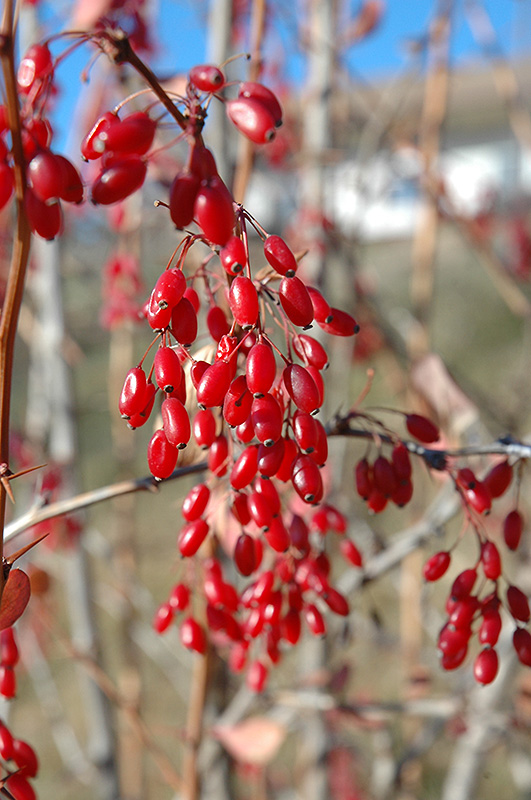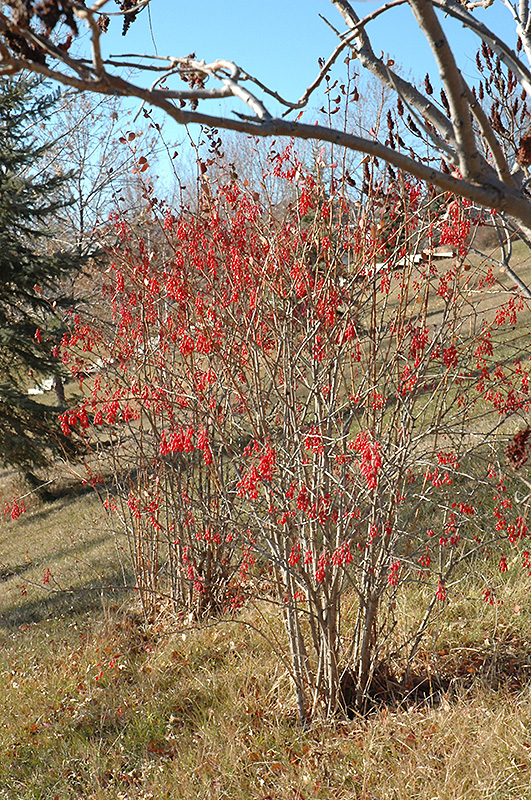Plant Finder
Height: 5 feet
Spread: 4 feet
Sunlight:
![]()
![]()
Hardiness Zone: 3a
Description:
A fine but underutilized shrub featuring showy flowers, bright red fruit and superb fall color; multifunctional, excellent used as a hedge or barrier due to its thorns, not very fussy about its growing conditions
Ornamental Features
Korean Barberry is primarily grown for its highly ornamental fruit. The fruits are showy red drupes carried in abundance from early to late fall. It features showy racemes of yellow flowers hanging below the branches in mid spring. It has green deciduous foliage. The oval leaves turn an outstanding red in the fall.
Landscape Attributes
Korean Barberry is a multi-stemmed deciduous shrub with a shapely oval form. Its average texture blends into the landscape, but can be balanced by one or two finer or coarser trees or shrubs for an effective composition.
This shrub will require occasional maintenance and upkeep, and can be pruned at anytime. Deer don't particularly care for this plant and will usually leave it alone in favor of tastier treats. Gardeners should be aware of the following characteristic(s) that may warrant special consideration;
- Suckering
- Spiny
Korean Barberry is recommended for the following landscape applications;
- Mass Planting
- Hedges/Screening
- General Garden Use
Planting & Growing
Korean Barberry will grow to be about 5 feet tall at maturity, with a spread of 4 feet. It tends to fill out right to the ground and therefore doesn't necessarily require facer plants in front, and is suitable for planting under power lines. It grows at a medium rate, and under ideal conditions can be expected to live for approximately 30 years.
This shrub does best in full sun to partial shade. It is very adaptable to both dry and moist locations, and should do just fine under average home landscape conditions. It is considered to be drought-tolerant, and thus makes an ideal choice for xeriscaping or the moisture-conserving landscape. It is not particular as to soil type or pH, and is able to handle environmental salt. It is highly tolerant of urban pollution and will even thrive in inner city environments. This species is not originally from North America.






